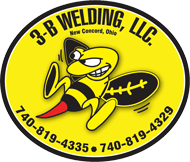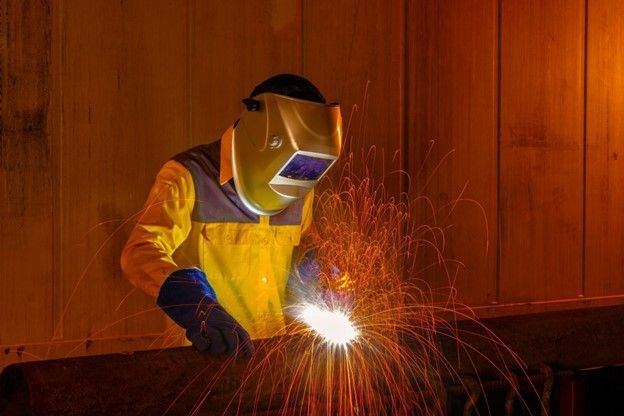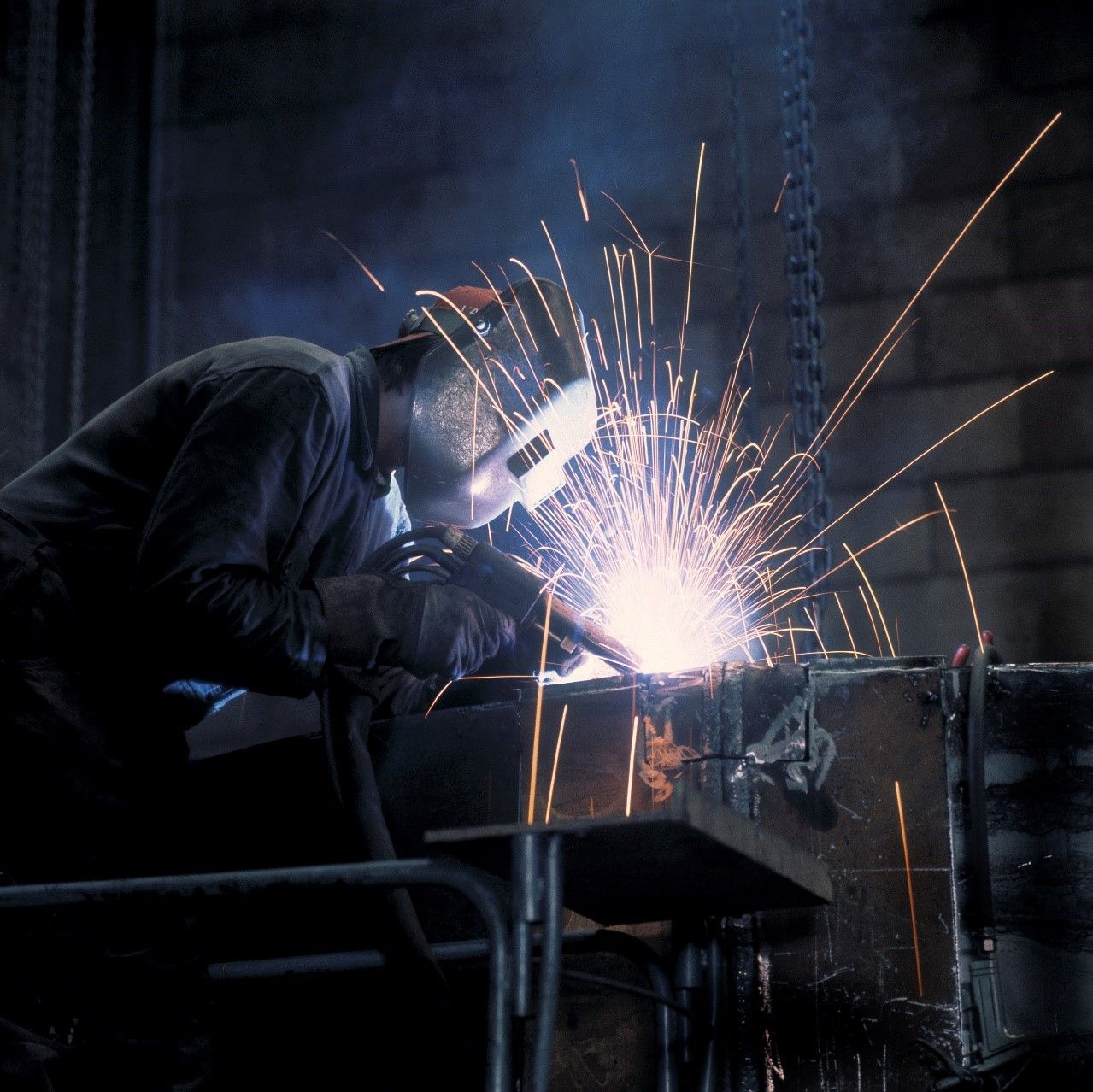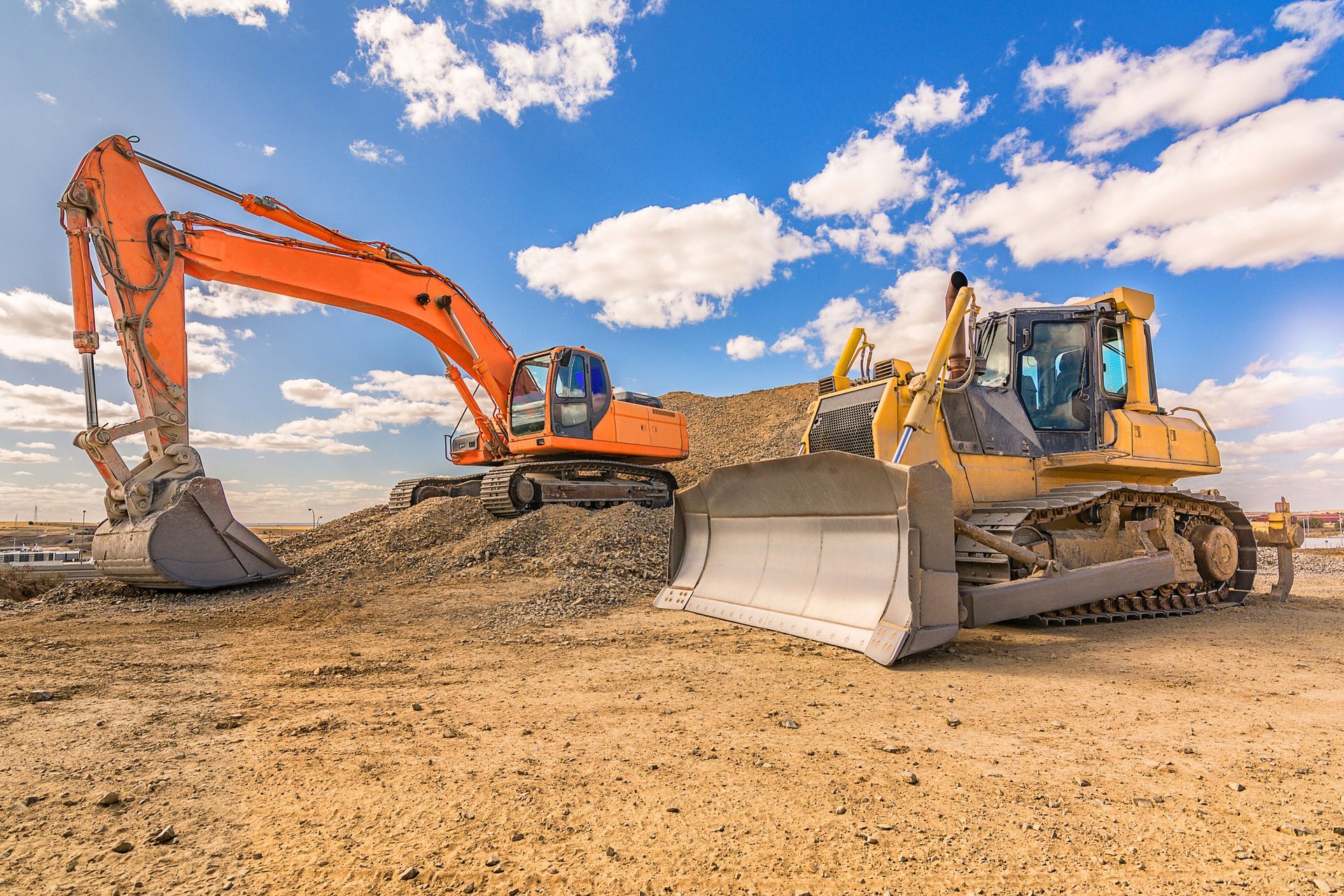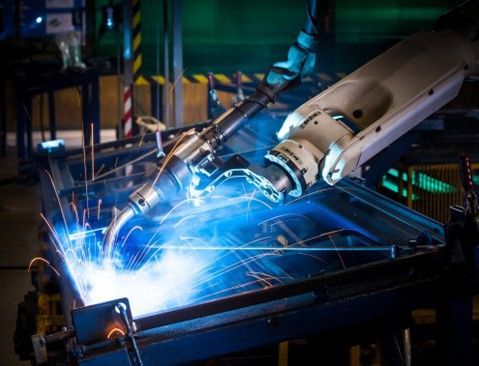
4 Common Welding Processes Explained
Welding is the process of combining two or more metal pieces by melting and fusing them. The process involves creating a strong bond between the materials by heating them to their melting point and adding a filler material if needed. Welding has various applications including construction, manufacturing, and automotive. Here are the most common welding processes.
1. Gas Metal Arc Welding
Gas Metal Arc Welding (GMAW), or Metal Inert Gas (MIG) welding, is a welding process that utilizes a consumable electrode wire and a shielding gas to join metal components. GMAW is widely used in automotive, construction, and manufacturing industries due to its versatility and efficiency.
In GMAW, a power source supplies electrical current to the welding gun, continuously feeding the consumable electrode wire. The electrode wire, typically made of solid or flux-cored material, serves as both the filler metal and the electrode. Simultaneously, a shielding gas, such as argon, helium, or a mixture of gasses, emanates from the gun nozzle to protect the welding area from atmospheric contamination.
GMAW offers several advantages, including high welding speed, ease of automation, and the ability to weld various metal types and thicknesses. The process provides excellent control over the welding process, allowing for precise and clean welds. Furthermore, welders can perform GMAW in all positions, including flat, vertical, horizontal, and overhead. This makes the process a versatile technique for different welding applications.
2. Gas Tungsten Arc Welding
Gas Tungsten Arc Welding (GTAW), also known as Tungsten Inert Gas (TIG) welding, is a welding process that uses a non-consumable tungsten electrode to create an electric arc for melting and joining metal pieces. In this method, an inert gas, typically argon, is used to shield the weld area from atmospheric contamination.
GTAW offers several advantages, including precise control over the welding process and the ability to weld various metals, including aluminum, stainless steel, and copper alloys. The non-consumable tungsten electrode remains intact during the welding process and is resistant to high temperatures, making it ideal for applications that require high-quality welds.
3. Shielded Metal Arc Welding
Shielded Metal Arc Welding (SMAW), also known as Stick welding, is a welding process that utilizes a consumable electrode coated with a flux to create an electric arc for joining metal pieces. In SMAW, the welder strikes an arc between the electrode and the workpiece, which melts both the electrode and the base metal. The flux coating on the electrode releases a protective gas and creates a slag that shields the weld area from atmospheric contamination. The slag also acts as a protective layer, promoting solidification and preventing oxidation.
This welding method is known for its portability, making it suitable for both indoor and outdoor applications. You can use SMAW to weld a wide range of metals, including carbon steel, stainless steel, and cast iron.
4. Flux Cored Arc Welding (FCAW)
Flux Cored Arc Welding (FCAW) is a welding process that utilizes a continuously fed electrode wire with a flux core. The flux core contains various compounds that provide shielding and produce a protective gas when heated. This shields the weld area from atmospheric contamination, preventing oxidation and improving the quality of the weld.
FCAW is commonly used in heavy industries, construction, and shipbuilding due to its high deposition rates and ability to weld thick materials. The process can be performed with or without external shielding gas, making it versatile for different applications. The process is suitable for welding mild steel, low-alloy steel, and some stainless steel. FCAW offers good penetration and high weld quality and is generally easier to learn compared to other welding techniques.
3-B Welding LLC offers various welding services and uses the latest welding techniques. We specialize in custom fabrication and welding, steel erection, and custom equipment repairs. Contact us now to get started.






